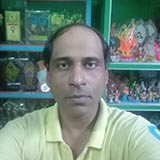Katwa’s paper masks: Low-cost art that ruled fairs and politics— GetBengal story
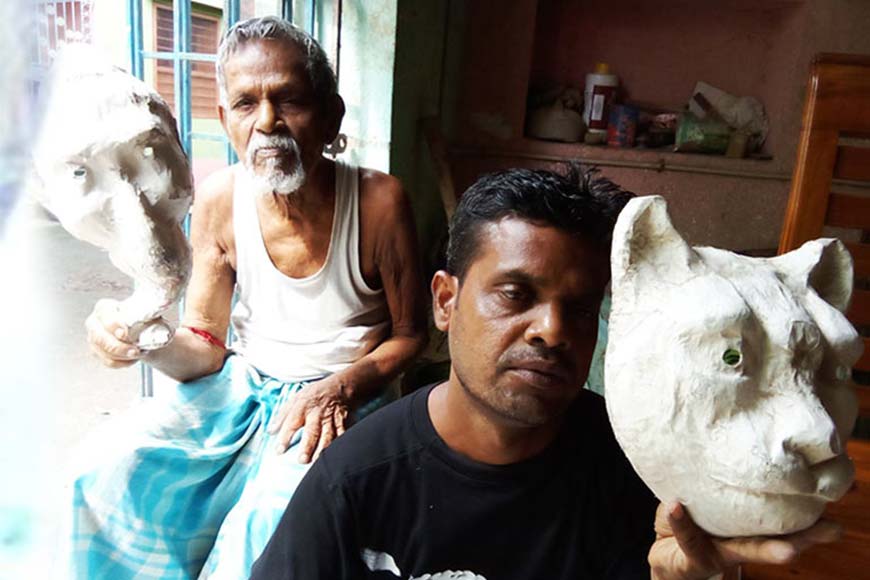
The light raindrops of Sraban fall to the ground, dancing with the push of the cool breeze. The cloud-laden afternoon has made the tranquil environment of Ballavpara Ferry Ghat in Katwa even more nostalgic. Passengers keep coming and going from the opposite bank to this side, yet no one feels like making any noise; they move calmly towards their destinations. Right beside this ferry ghat lies Harisabha Para, where seventy-year-old Kartik Das sits quietly, sinking deep into the abyss of memories. There was a time when the very mention of Katwa’s paper masks brought his name before all others. The Rath and Charak fairs of Katwa used to glow with the masks he crafted, and his creations—Hanuman, demon, tiger, lion, joker, bear, skeleton, cat—would even travel to other districts.
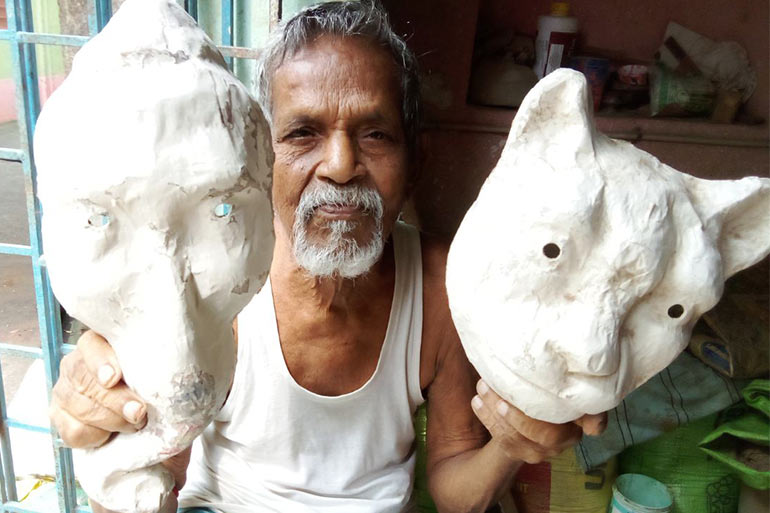
Following the family tradition, Kartik Das carried this artistic style forward in Katwa for decades. His two sons, Dipankar and Panchanan Das, also became involved in the craft. In one season, with the help of all the family members, he would make more than two thousand masks. During the time of Rath and Charak, researchers as well as television channels would crowd into the lane leading to his house. But with time, the local demand began to decline, and the Covid pandemic made the situation even more difficult. As a result, mask-making has come to a complete halt for the last four years. To earn a livelihood, Kartik Das’s family now survives solely by making clay-structured idols. No one comes to their lane anymore, and during Rath and Charak, the bustle of mask-making is no longer seen on the veranda of Kartick Das’s house. Only about twelve masks remain, along with a few dusty moulds.
Speaking about how such masks were made using paper, Kartik Das’s son, Dipankar Das, explained that first, a clay mould of the mask had to be created. This mould could sometimes be of a monkey, sometimes a joker, or an asura, depending on the demand. Then, small pieces of newspaper were mixed with homemade glue to create a coating, locally called poti, which was layered onto the mould. In the first layer, very little glue was used. In this way, multiple coatings were created and applied to the mould, with special care taken to ensure that the glue did not stick directly to it. While the first coating used very little glue, the subsequent ones used comparatively more. Notably, a minimum of ten or more layers was applied inside the mould. Once the paper coating became slightly thick, it was carefully removed in raw form from the mould, dried under the sun, and then coated with a thin layer of clay. After the clay dried, a base was prepared using white chalk clay (kharimati), upon which colors were applied to bring the masks to life. Importantly, the eyes of the mask were pierced before applying the clay coating. As the artisan explained, even though a clay layer was applied, the mask remained lightweight. The clay coating not only made coloring easier but also concealed the folds and creases of the paper.
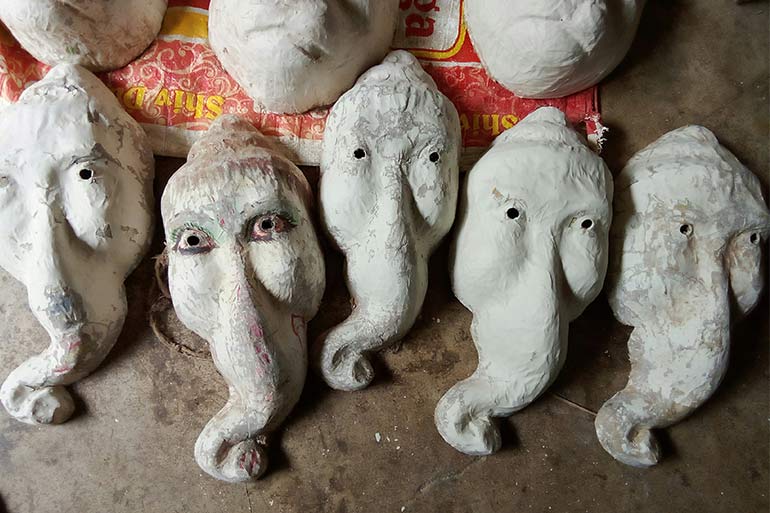
Alongside entertaining rural children, orders for masks also came for plays and jatra (folk theatre). Even during election campaigns, there was a demand for masks, so local political party workers would come to Kartik Babu as well. Today, all of this has faded into memory. Years away from the spotlight of publicity, the mask-making tradition that once rose from the very soil of Katwa has now vanished. For the artist, what remains are only memories, along with twelve masks, coated with chalk clay, now lying covered in dust. There are also three clay moulds filled with dust, one of which is broken. Just as the bereaved hold on to the belongings of their loved ones after death, items that still carry traces of sweat, breath, and presence, so too have these become the sole repositories of memory for the artist. Some old photographs of painted masks remain in his mobile gallery, which he showed to the reporter. One cannot help but be captivated by the expressive faces of those masks. Perhaps, on the day when the rainbow of colours once again plays across the chalk-coated white surface of a mask, Katwa’s mask-making tradition will be reborn, alive once more after countless lifetimes.
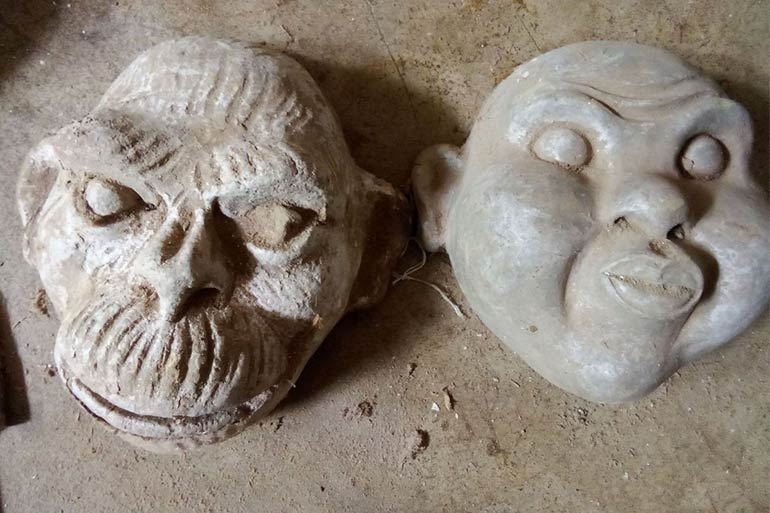
At present, Chhau and Gamira masks have crossed the borders of Bengal and reached other states as well. In handicraft fairs, the pavilion of Purulia district is almost entirely taken over by Chhau dance masks. This has been possible only because of promotion and publicity. Similarly, if in the days to come proper exposure and public awareness are created, the masks of Katwa too will win the world.
Note: Translated by Sabana Yasmin
To read the original Bengali article, click here:







